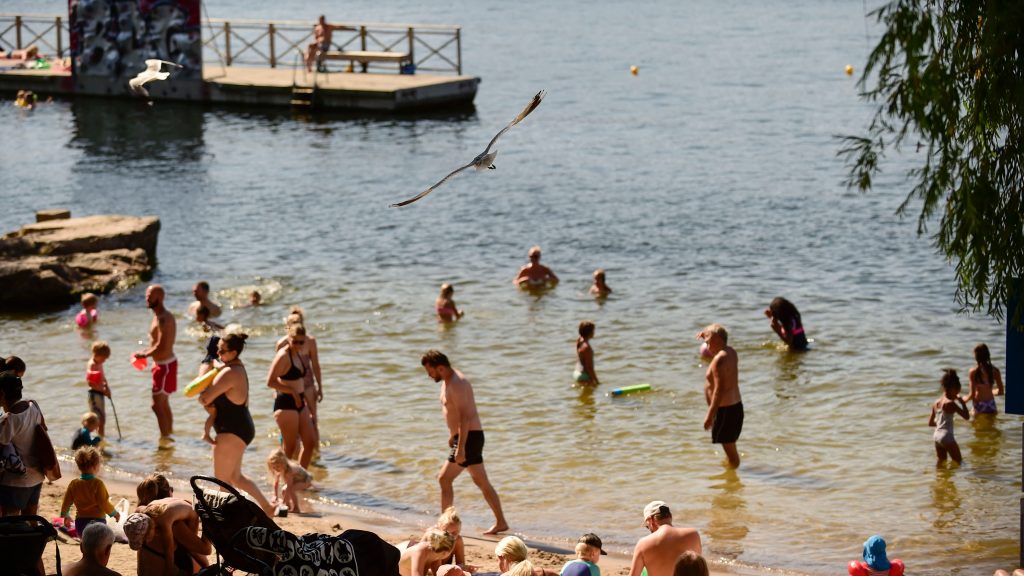This year’s exceptional heat is becoming the new normal, scientists warn

By July 15, at least 70 people in Quebec (province in eastern Canada) had died of heat-related complications as temperatures climbed to the mid-30s in some parts of the province, with humidex values into the mid-40s.
Similar sweltering temperatures have been felt all over the world.
In the past two weeks, from California to Oman to Siberia, temperatures have soared, shattering records. Here’s just a small sample:
- Death Valley National Park, Calif.: 52 C (July 8)
- Ouargla, Algeria: The highest reliable recorded temperature of 51 C (July 5)
- Northern Siberia: Consecutive days with forecast above 30 C (July 9–16)
- Chino, Calif.: Daytime record of 48.9 C (July 7)
- Tajimi, Japan: Record-setting temperature of 40.7 (July 17)
The good news? This isn’t anything climatologists didn’t expect.
The bad news? This isn’t anything climatologists didn’t expect.
And we’d better adapt to it.
“This is unfortunately our new normal,” said Ahira Sanchez-Lugo, a physical scientist at the National Oceanic and Atmospheric Administration’s (NOAA) National Centers for Environmental Information.

As carbon dioxide (CO2) levels continue to rise in the atmosphere, Earth’s temperature continues to rise along with them. Since 1880, the average global temperature has increased by about 0.8 C.
This warming is exacerbated by humans as we continue to pump more CO2 into the atmosphere and this, in turn, upsets Earth’s delicate balance. What results is a swing in climate, with more extremes such as droughts, heat waves and flooding.
And that’s important to note: it’s not all about warming; it’s about the dangerous extremes.
Extreme heat becoming more frequent
“When it comes to extreme heat, we can say the odds of extreme heat or heat waves have been significantly increased by climate change,” said Clare Nullis, spokesperson for the World Meteorological Organization.
“We have to start getting used to it.”
On Wednesday, NOAA released its Global Climate Report for the month of June — the fifth warmest on record (1.06 C above the 20th century average).
“Four of six continents had a June temperature that ranked among the seven warmest Junes since continental records began in 1910,” the report says.

And while the meteorological summer (June 1 to September 1) has been hot, it’s unlikely 2018 will surpass 2016 as the the hottest year on record. That was also the year with one of the most powerful El Ninos, a warming in the Pacific Ocean that has worldwide repercussions, including higher temperatures and greater precipitation in various regions.
This year the world is experiencing a La Nina, the opposite of an El Nino, which actually causes cooling. The temperatures from January to May 2018 broke the record for a La Nina year.
June 2018 was was tied for the third warmest June in 138 years of modern record-keeping at +0.77°C above the 1951-1980 baseline average. Only June 2015 and 2016 (+0.80°C and +0.79°C) were warmer. https://t.co/7B2Fxssnwu pic.twitter.com/ibwYfV9o2K
— NASA GISS (@NASAGISS) July 16, 2018
Despite the fact 2018 is unlikely to break the 2016 record, Sanchez-Lugo says the trend is undeniable.
“On average, we’re breaking records every four years since 1980,” she said. “Before that it was every 13 years.”
Temperatures not even ‘close to normal’
The last time Earth experienced a year with below average temperatures was 1976.
The warming trend has seen rising temperatures primarily in the Northern Hemisphere.
David Phillips, Environment Canada’s senior climatologist, said across the country, the average summertime temperature has increased by 1.5 C above the 1961-1990 average. Winter is even more dramatic with a 3.4 C rise.
The warming trend isn’t a smooth line upward. Phillips points to Toronto, Canada as an example. In 2016, there were 36 days above 30 C, compared to just nine in 2017, and 17 so far this year.
“It’s not just a dramatic warming up,” Phillips said of climate change. “It’s … a slow motion, and that’s why it’s so easy to ignore.”
But none of those three years has “even been close to normal,” he said. “And that’s the problem.”
And while no isolated weather event can be linked directly to climate change, extremes are to be expected in a warming world, experts say.
“We cannot point to an individual event, such as the heat wave in Canada, and say, ‘OK, that was definitely caused by climate change,'” Nullis said. “But what we can say is, ‘Well, that is consistent with what we would expect under climate change.'”
Related stories from around the North:
Canada: Warming Arctic shrinking Canadian glaciers at alarming rate says study, Eye on the Arctic
Finland: Finnish trains delayed as heatwave overtakes air conditioning, Yle News
Greenland: Glacier half the size of Manhattan breaks off Greenland, CBC News
Norway: Northern Barents Sea warming at alarming speed, The Independent Barents Observer
Russia: On thin ice, North Pole camp folds after only 12 days, The Independent Barents Observer
Sweden: Hundreds flee historic wildfires, Sweden’s PM says better preparedness needed, Radio Sweden
United States: Rapid Arctic warming is increasing the frequency of blizzards in U.S. Northeast: study, Radio Canada International



